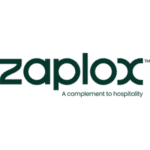Most hotel managers cannot tell you how their occupancy percentage for the last week compared to the prior 90 days without referencing some report. They think they have KPIs, but they really don’t because they aren’t using them effectively. In fact, studies show over 50 percent of hotel owners haven’t even defined their KPIs, and the majority of those that do only look at them once a month. If you want to exceed all of your business goals, you need to be tracking your KPIs in real-time and on a daily basis.
74 percent of business owners who track their KPIs in real time meet or exceed all of their revenue targets, which is nearly twice the percentage of those who only look at their KPIs once a month. Tracking your KPIs in real-time isn’t as much work as you think if you have the right system in place.
The system I share with you in this article will allow you to follow all of the critical components of your business and make key decisions in only 10 minutes a day.
How to choose the right KPIs to have sent to you daily
Imagine driving your car without any of the gauges on the dashboard. Your car would end up costing you more money than if you had a dashboard. Having no gas gauge would mean you’d run out of gas more often, which means paying for a tow to a gas station.
No speedometer means you’re more likely to speed, which could cost you a speeding ticket and points on your license that could increase your insurance cost. Similarly, not measuring and analyzing the critical KPIs of your business on a daily, weekly, and monthly basis costs you potential revenue, and almost certainly, increases your expenses.
Steps to making sure you select the right KPIs for your business:
1- Limit your selection to the most critical information
The KPIs you get sent daily need to only focus on the numbers that are absolutely necessary to run your business. You should be able to get 80 percent of what you need to know within a 10-second glance.
2 – Set a goal for each KPI
Each KPI you choose needs to have a clearly defined goal. This lets you measure your rate of success. In some cases, you can set a “Quota” and a “Goal.” The quota is the absolute minimum acceptable number and the goal is what you would like to achieve.
3 – Create an alert for each KPI to let you know when you need to dig further
KPIs need to have a minimum or maximum level that set off an alarm if the KPI in question goes above or below a certain level. This will vary on a case-by-case basis, as all KPIs are not measured the same way.
4 – Choose a senior member of your team to send your KPIs to you daily
Finally, you need to get your KPI dashboard texted to you daily by a senior member of your team. It needs to function sort of like a treasure map – marking “X’s” where you need to “dig further” to get the root cause of a concerning number or numbers.
You also need to have KPI goals on the weekly and monthly level, and these KPIs need to be sent to you on a weekly and monthly basis. It will look exactly like the KPI report you get sent daily, but it will be measuring your KPIs weekly or monthly instead of daily.
KPIs every hotel executive should track daily:
- Total Available Rooms
- Occupancy Percentage
- Average Daily Rate
- Revenue Per Available Room
(For each of these KPIs, you should receive the number for today and then a percentage that represents how this compares to the 90-day Running Average)
Let’s look at each of these key performance indicators in detail, and then I’ll end with an exercise I use with my business coaching clients to test if the KPIs they chose tell them enough for them to run their business from an island.
Total Available Rooms
- How it is calculated: Total Rooms (-) Occupied Rooms (-) Out-of-Order Rooms
- Why it is important: You need to know how many rooms are available at any given time.
- When you should dig further: If your total available rooms is significantly higher than the same day of the week last year, and/or if it is higher than your 3-month running average.
Occupancy Percentage
- How it is calculated: Rooms Occupied ( / ) Total Available Rooms
- Why it is important: Your occupancy percentage lets you know how filled your hotel is. You should know exactly what the minimum occupancy percentage you need to maintain to be profitable. Checking it daily against the day last year and your 3-month running average makes sure you’re on a track towards growth.
- When you should dig further: You need to explore this KPI further if it gets close to, or falls below, the minimum occupancy rate you need to turn a profit.
Average Daily Rate
- How it is calculated:Total Room Revenue ( / ) Total Rooms Occupied
- Why it is important: Your average daily rate shows you how much revenue you are generating per each room that is booked. Looking at this number keeps you from discounting rooms too much just to raise your occupancy rate. Analyze this number compared to the day last year and your 3-month running average.
- When you should dig further: Calculate the minimum average daily rate you need to achieve to maintain profitability. You should look into this KPI further when it dips below the number you just calculated. You should also look into it when your occupancy rate is higher than average but your average daily rate is lower than average.
Revenue Per Available Room
- How it is calculated: Average Daily Rate ( x ) Occupancy Rate
- Why it is important: Revenue Per Available Room, or RevPAR, shows how successful a hotel is at filling rooms over a given period of time. It shows you the average revenue you’re generating off of each room, rather than just each occupied room. The ultimate goal is to have this number be equal to your occupancy rate, as it means all available rooms are filled.
- When you should dig further:: Calculate the minimum RevPAR you need to be profitable. Your “alarm” goes off if you dip below this number. You should also dig further if your daily RevPAR is significantly below last year’s or your 3-month running average.
The “run your business from an island” KPI test
Imagine you were going to be on a secluded island for a month and could only work for 10 minutes a day.
You get one minute of internet access at the beginning of the day where your KPIs sent to you. Then you get 8 minutes to analyze those KPIs and decide what your team needs to do. You get another minute of internet access at the end of the 10 minutes to give your team direction.
Your KPIs will fail this test if they can’t give you a picture of where your business is within 10 seconds.
Using KPIs this efficiently takes practice, but once you conquer them, you will have a pulse on your business that is unlike anything else.
It’s not always easy to build these KPIs when you are inside the business, however. That’s why I work as an advisor to some of the top CEOs and hotel executives to help them massively improve their business. Reach out to my office and mention this article to schedule a time for us to work on your KPIs one on one. I want to help your hotel dominate in your area!

 Most hotel managers cannot tell you how their occupancy percentage for the last week compared to the prior 90 days without referencing some report. They think they have KPIs, but they really don’t because they aren’t using them effectively. In fact, studies show over 50 percent of hotel owners haven’t even defined their KPIs, and the majority of those that do only look at them once a month. If you want to exceed all of your business goals, you need to be tracking your KPIs in real-time and on a daily basis.
Most hotel managers cannot tell you how their occupancy percentage for the last week compared to the prior 90 days without referencing some report. They think they have KPIs, but they really don’t because they aren’t using them effectively. In fact, studies show over 50 percent of hotel owners haven’t even defined their KPIs, and the majority of those that do only look at them once a month. If you want to exceed all of your business goals, you need to be tracking your KPIs in real-time and on a daily basis.






























